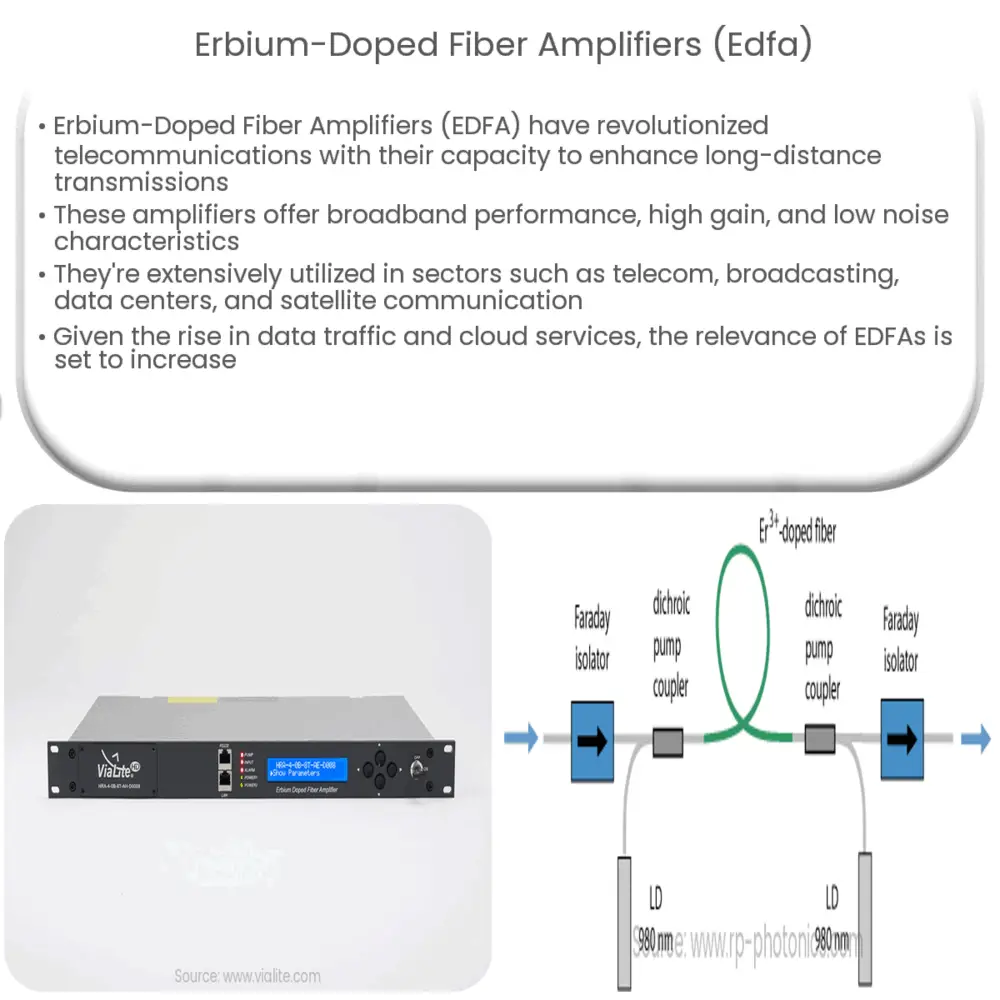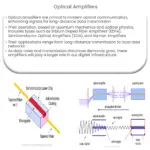Explore the world of Erbium-Doped Fiber Amplifiers (EDFA), their functionality, benefits, and pivotal role in optical communication.

Erbium-Doped Fiber Amplifiers (EDFA): An Overview
The world of telecommunications has undergone numerous technological revolutions, one of which is the advent of Erbium-Doped Fiber Amplifiers (EDFA). This breakthrough technology significantly improved the functionality of optical communication systems, particularly long-distance transmission. Today, we delve into the functionality, benefits, and applications of EDFA.
The Functionality of EDFA
Erbium-Doped Fiber Amplifiers or EDFAs are a type of optical amplifiers that employ a doped optical fiber as a gain medium to amplify an optical signal. The central component of these devices is a short piece of optical fiber that has been doped with the rare earth element erbium (Er3+).
In EDFA, the input signal light is combined with a high-power laser beam, referred to as the pump laser, within the erbium-doped fiber. The erbium atoms are excited to a higher-energy state by the energy from the pump laser. When the input signal light passes through, these excited erbium ions return to their normal state, emitting photons that match the input signal light, thus amplifying it.
Benefits of EDFA
- One of the primary advantages of EDFAs is their broadband performance. They can amplify a wide range of wavelengths simultaneously, which aligns with the demands of wavelength division multiplexing (WDM), a technology used in fiber-optic communications for transmitting large amounts of data.
- Another substantial benefit is their high gain and output power. EDFA can boost weak signals up to a detectable level, making it ideal for long-distance communication.
- EDFA also stands out for its low noise characteristics. The signal distortion is significantly lower than in other types of amplifiers, which contributes to preserving the integrity of the signal over long distances.
These compelling features have made EDFA the go-to choice for various applications in optical communication systems. It is indispensable in many sectors, including telecom, broadcasting, and data centers, among others.
Applications of EDFA
The widespread adoption of Erbium-Doped Fiber Amplifiers is due to its applications across diverse domains. Here are some noteworthy examples:
- Telecommunications: EDFAs play a crucial role in long-distance telephone networks and internet data traffic. They effectively amplify the signals, allowing them to travel further without degradation.
- Optical Networks: In the realm of Wavelength Division Multiplexing (WDM) systems, EDFAs are often deployed to amplify all channels simultaneously, thus enhancing network performance.
- Satellite Communication: EDFAs are extensively used in satellite communications for signal amplification. They allow the reliable transmission of data across large distances with minimal signal loss.
- Data Centers: Given their high data carrying capacity and low signal distortion, EDFAs are also deployed in data centers to handle massive amounts of data transmission.
Future Prospects and Conclusion
With the exponential growth in data traffic and the rise of cloud-based services, the demand for efficient and reliable optical communication systems is higher than ever. In this context, the role of EDFAs is likely to become even more prominent. Research and development are ongoing to further optimize their performance and adaptability, and this only strengthens their position as an invaluable tool in optical communication.
In conclusion, Erbium-Doped Fiber Amplifiers (EDFA) have been a game-changer in optical communication technology. Their ability to provide wide bandwidth, high gain, low signal distortion, and broad wavelength range makes them an ideal choice for various applications. As we continue to rely on the transmission of data over long distances, the significance of EDFAs will undoubtedly grow.



